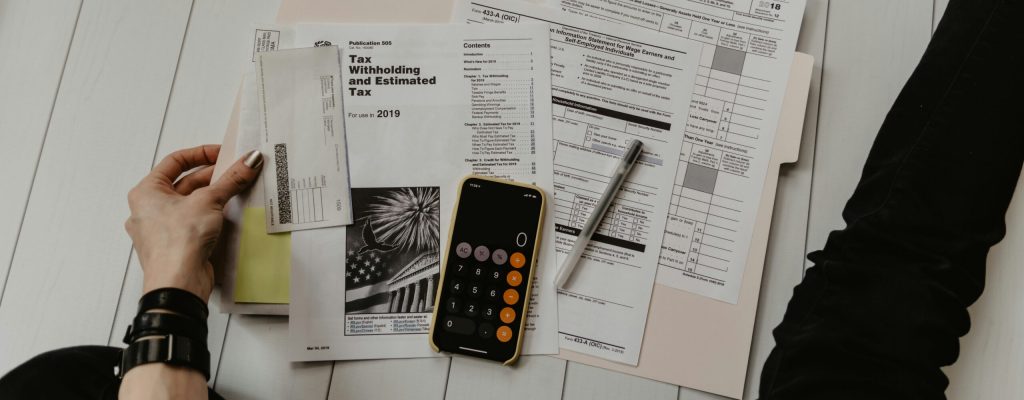Important information about your self-assessment tax return
Introduction to self assessment

Firstly, as the tax season is drawing upon us, all self-assessment tax returns filed electronically must be submitted by 31st January 2024 for the tax year ended 5th April 2023. Any tax returns (unless HMRC has issued a notice) submitted after 31st January will be deemed as received late and the first fine of £100.00 will be issued to the taxpayer.
The 31st of January which follows the end of the tax year is known as the “ filing date “ for that year. However, if a notice is issued after 31st October, the filing date becomes the date which falls three months after the issue date of the notice. For example, should HMRC issue a notice on the 1st of December, the taxpayer has three months after this date to file their tax return which will be 1st of March 2024. For the vast majority of taxpayers, the filing date is 31st January 2024 following the tax year ending 5th April 2023.
The tax due for a self-assessment is normally payable as follows:
- A first payment on account ( POA ) is due on 31st January in the tax year to which the self-assessment relates.
- A second Payment on account is due on the following July.
- A final balancing payment is due on the following 31st
For example, the tax due to a 2022-2023 self-assessment would normally be payable on 31st January 2023 ( first POA ), 31st July 2023 ( second POA ) and 31st January 2024 ( balancing payment ).
Determinations
If an individual fails to submit a tax return by the required date, an Office of Revenue and Customs may make a determination of the tax due, calculated according to “best of his information and belief “. There is no right of appeal against a determination and the tax due cannot be postponed. A determination can be displaced only if the tax return is filed.
Enquiries
HMRC may enquire into any tax return. The usual reason for opening an inquiry is the suspicion that something is wrong with the return. However, some inquiry cases may be selected at random and HMRC is under no obligation to justify the opening of an inquiry or to state whether or not the case has been chosen randomly.
- If a tax return is filed by the due date, an inquiry cannot usually begin more than 12 months after the date on which the return was filed. This means that the inquiry window for a return which is failed early closes correspondingly early.
- If a return is filed late or is amended after the date on which the return was due to be filed, the inquiry window is extended until the quarter day which follows the first anniversary of the date on which the return our amendment was filed. For this purpose, the quarter days are 31 January, 30 April, 31 July and 31 October.
Discovery Assessments
HMRC may raise a discovery assessment if it is discovered that Full disclosure has not been made in a tax return and tax has been lost as a result. The time limits for making a discovery assessment is normally four years after the end of the tax year concerned. This increases to six years if the taxpayer has been negligent and 20 years if the taxpayer has been dishonest. The normal time limit is 12 years if an offshore matter is involved. Increasing to 20 years in the case of dishonesty.
Record Keeping
Taxpayers must keep proper records to make an accurate tax return and, if necessary, substantiate the figures entered on the return. A taxpayer who is in business or who will let property must normally preserve these records for five years after 31 January, which follows the end of the tax year. For example, records for tax year 22- 23 must normally be retained until 31 January 2029 by a taxpayer who is in business or who lets property and until 31 January 2025 otherwise.
Appeals
Taxpayers have the right to appeal against many HMR decisions. For example, a taxpayer may appeal against a discovery assessment or an HMRC amendment to a self-assessment. The main features of the appeals system are as follows:
- An appeal must be sent to HMRC in writing within 30 days of the disputed decision.
- The taxpayer may also apply to postpone payment of all or part of any tax which is payable due to the decision. However, interest will continue to accrue on the postponed amount until the appeal is settled. However, postponement is generally not available if the appeal relates to the use of a tax avoidance scheme, all arising in connection with arrangements which HMRC has counteracted under the General anti-abuse ruling.
- On receiving an appeal, HMRC considers the taxpayer’s reasons for disputing the decision. Most appeals are settled by discussion and agreement at this stage.
- If the taxpayer and HMRC cannot agree, the taxpayer will usually be offered an internal review of the decision. A taxpayer who wishes to accept this offer must normally do so within 30 days. An internal review is carried out by an HMRC officer who was not previously been involved with the disputed decision and is usually completed within 45 days. The review officer then writes to the taxpayer to inform him or her of the review’s conclusions.
- A taxpayer who rejects the offer of an internal review may appeal to a tribunal within 30 days of the date of the offer letter. Otherwise, an appeal to a tribunal may be made within 30 days of the date of the review conclusion letter.
- Most appeals are dealt with by the tax Chamber of the first-tier tribunal. However, the tax and Chancery Chamber of the upper tribunal may hear more complex appeals. The upper tribunal also hears appeals against first-tier tribunal decisions.
- If either HMRC or the person concerned is dissatisfied with a decision made by the upper tribunal, a dispute on the point of law may be referred to the Court of Appeal.




